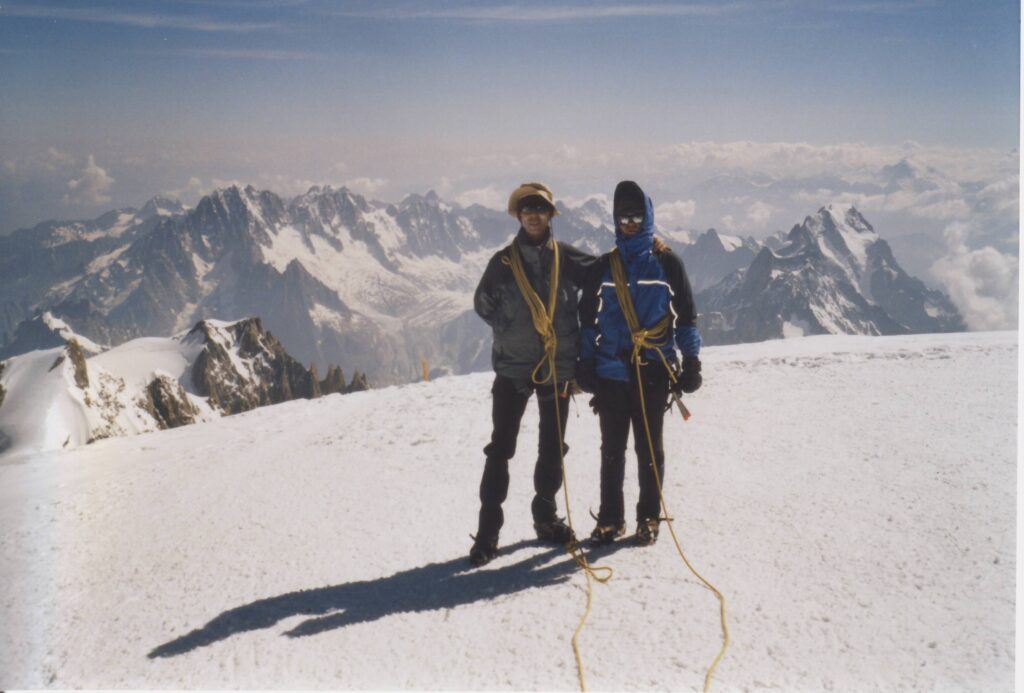My Biggest Mistake on the Mountain
Back When I Thought I Knew It All
Over 15 years ago, I thought I was something special — full of confidence from courses, books, and plenty of glacier tours. I had “guide” written all over me, at least in my own head.
So when Klaus, a Swiss friend about 20 years older than me, asked me to guide him up the Mönch (4110 m), Jungfrau (4158 m), and Mont Blanc (4806 m) via the Cosmiques route, I didn’t hesitate.
Klaus had little strength in his left hand after an accident — he still doesn’t. But I told myself: “I’ll manage, I’ll figure it out if anything goes wrong.”
In my mind, everything made perfect sense:
I was good.
He knew I was good — that’s why he trusted me.
Why pay a certified guide 4000 CHF when I could take him for free?
Three Summits, One Big Blind Spot
The Mönch was first. A narrow ridge that can feel like walking a tightrope — but we had no issues.
The Jungfrau came next. The Rottal saddle is usually the make-or-break moment, and I definitely felt the weight of it. But again, things went well. A blue-sky summit. Silent, magical.
Then came the big one — Mont Blanc.
We left Zurich early Thursday morning, had lunch in Chamonix, reached the Cosmiques Hut by 3 PM, and “slept” until 1:30 AM. Then came Tacul, Maudit, and the final push. We reached the summit around 8 AM. By 4 PM we were down at the Nid d’Aigle train, and sometime after midnight, back in Zurich.
No rest. No backup plan. Just two overconfident climbers running on adrenaline.
But the mountains were kind:
The weather held, the Grand Couloir was silent, we had the route almost to ourselves. Everything clicked.
Klaus smiled, bought me a cake in Chamonix, and thanked me for the unforgettable experience.

The Moment Everything Turned
Years later, I was sitting at a hut after a course led by Hans, a certified IFMGA guide and veteran mountain rescuer. He was the one who taught me how to use a rope, how to hold an axe — how to respect the mountain.
Someone mentioned Klaus.
Hans looked up and said:
“Yeah… Klaus. I remember him. We lost touch, but I do recall how he kept asking me to take him up Mont Blanc. And maybe the Jungfrau, too. I kept telling him the same thing: my life is more important than his money. The risk was enormous. I knew he had no strength in his left arm.”
I froze.
That moment hit me like an avalanche.
Klaus hadn’t just asked me — he’d also asked a real guide. A guide who said no. Who saw the danger clearly. Who refused the climb out of principle.
And I?
I said yes.
Because I thought I was good enough.
Because I had no idea how much I didn’t know.

What I’ve Learned
Today, those climbs with Klaus no longer feel like proud achievements. They feel like lucky escapes. A story of how ego, ignorance, and good weather can be a dangerous cocktail.
I’ve learned that reaching a summit without responsibility isn’t a win.
That when someone trusts you with their life, it’s not a compliment — it’s a burden. One that must be earned, and carried with care.
I’ve learned that saying “I’ll take you” doesn’t make you brave.
Sometimes, real strength is saying: “No — it’s not safe. I’m not the right person for this.”
I could’ve lost it all on any of those climbs.
But we didn’t — not because I was great.
Because we were lucky.
Final Words
Today I know for certain:
True guiding isn’t about collecting summits. It’s about making the right call — even if that means turning back, or saying no.
The mountains don’t ask you to be perfect.
But they will never forgive carelessness.

